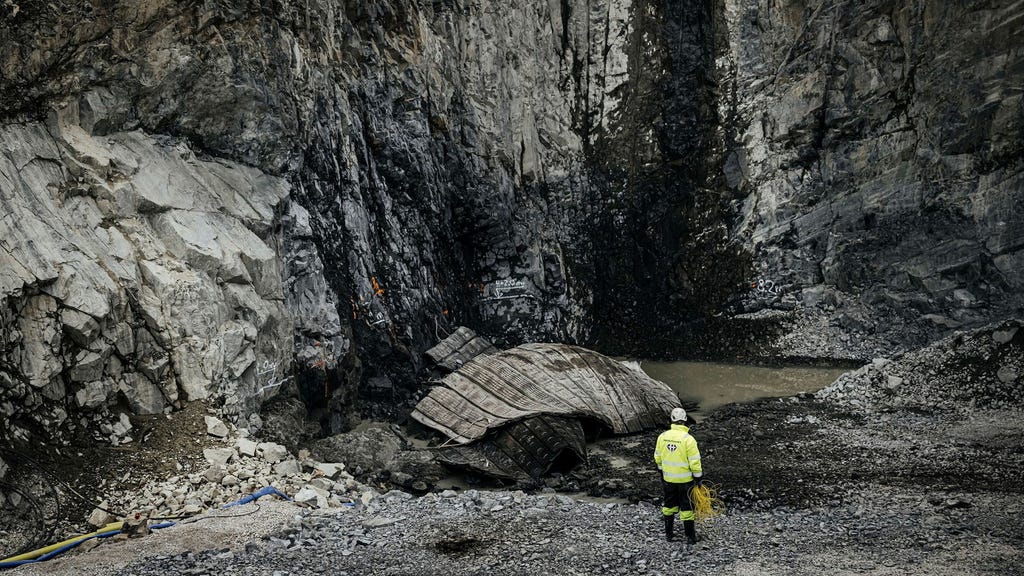Public Perception and the Future of Mining in Sweden
A recent survey conducted by Novus on behalf of the Geological Survey of Sweden (SGU) and the Mining Inspectorate of Sweden (Bergsstaten) reveals a growing acceptance and understanding of the importance of the mining industry among the Swedish public. Against the backdrop of the icy waters of the Luleå northern harbor, representatives from both organizations presented the survey’s findings, highlighting a significant shift in public opinion. A clear majority of Swedes now recognize the crucial role domestic mining plays in bolstering the national economy and generating employment opportunities. This represents a positive trend, signaling a broader recognition of the mining sector’s contribution to societal well-being.
The survey also explored public sentiment towards living in proximity to active mining operations. Interestingly, the results demonstrated a geographical divide in attitudes. While residents of central Sweden (Mellansverige) and northern Sweden (Norrland) expressed a higher degree of acceptance, those living in the Stockholm area, along with women in general, showed greater reservations about having a mine as a neighbor. Nevertheless, a substantial proportion of the overall population – around half – viewed the prospect of living near a mine favorably. This suggests an increasing level of comfort with mining activities, perhaps reflecting a growing appreciation of the industry’s economic benefits and its adherence to stricter environmental regulations.
Despite the currently limited number of active mines in Sweden, there is a significant surge in interest in establishing new mining operations. Currently, only 13 active mines operate in the country, the latest being a gold mine inaugurated in Lycksele in May of the previous year. This was the first new mine to open in Sweden in over a decade. However, according to Helena Kjellson, Chief Mining Inspector at Bergsstaten, there are currently 812 valid exploration permits and 159 valid exploitation concessions, indicating a robust pipeline of potential future mines. This burgeoning interest is further corroborated by the fact that five applications for exploitation concessions were submitted in the past year – a notable increase compared to previous years.
The increasing interest in mining is crucial for ensuring the long-term supply of essential minerals, both for Sweden and Europe as a whole. Kaj Lax, Acting Head of the Mineral Resources Department at SGU, emphasizes the urgency of opening new mines to maintain a balanced supply of raw materials. He points out that a vast majority – 90% – of the ore currently extracted in Sweden comes from mines that are over 50 years old. Given the finite lifespan of mines, new operations are essential to replenish dwindling reserves. The current rate of opening one small mine every ten years is insufficient to meet future demands and ensure resource security. The increased interest in exploration and exploitation permits offers a promising path towards greater self-sufficiency in critical minerals.
Several factors contribute to the renewed interest in mining. One significant development is the change in the timing of the Natura 2000 assessment within the permitting process. This assessment, which evaluates the potential environmental impact of mining activities on protected areas, has been moved from the beginning to the end of the process. This shift allows companies to focus initially on mineral exploration and development, rather than being immediately burdened with extensive environmental studies. This streamlined process encourages earlier applications for exploitation concessions, contributing to the observed increase in applications.
The exploration for rare earth elements is a particularly prominent driving force behind the current surge in mining interest. These elements are essential components in a wide range of modern technologies, including renewable energy systems, electric vehicles, and electronic devices. The majority of exploration permits for rare earth elements are concentrated in the northern counties of Norrbotten and Västerbotten, where existing mining infrastructure and geological formations conducive to these elements’ presence are prevalent. This "mine-near" exploration leverages existing knowledge and infrastructure, optimizing the search for these critical resources. The location of existing mines also contributes to a more targeted, and possibly more efficient exploration of surrounding areas, thereby increasing confidence in exploration ventures and further stimulating the search for new resources. The combination of public support, streamlined permitting processes, and the strategic importance of rare earth elements are creating a favorable environment for the expansion of the mining industry in Sweden.














